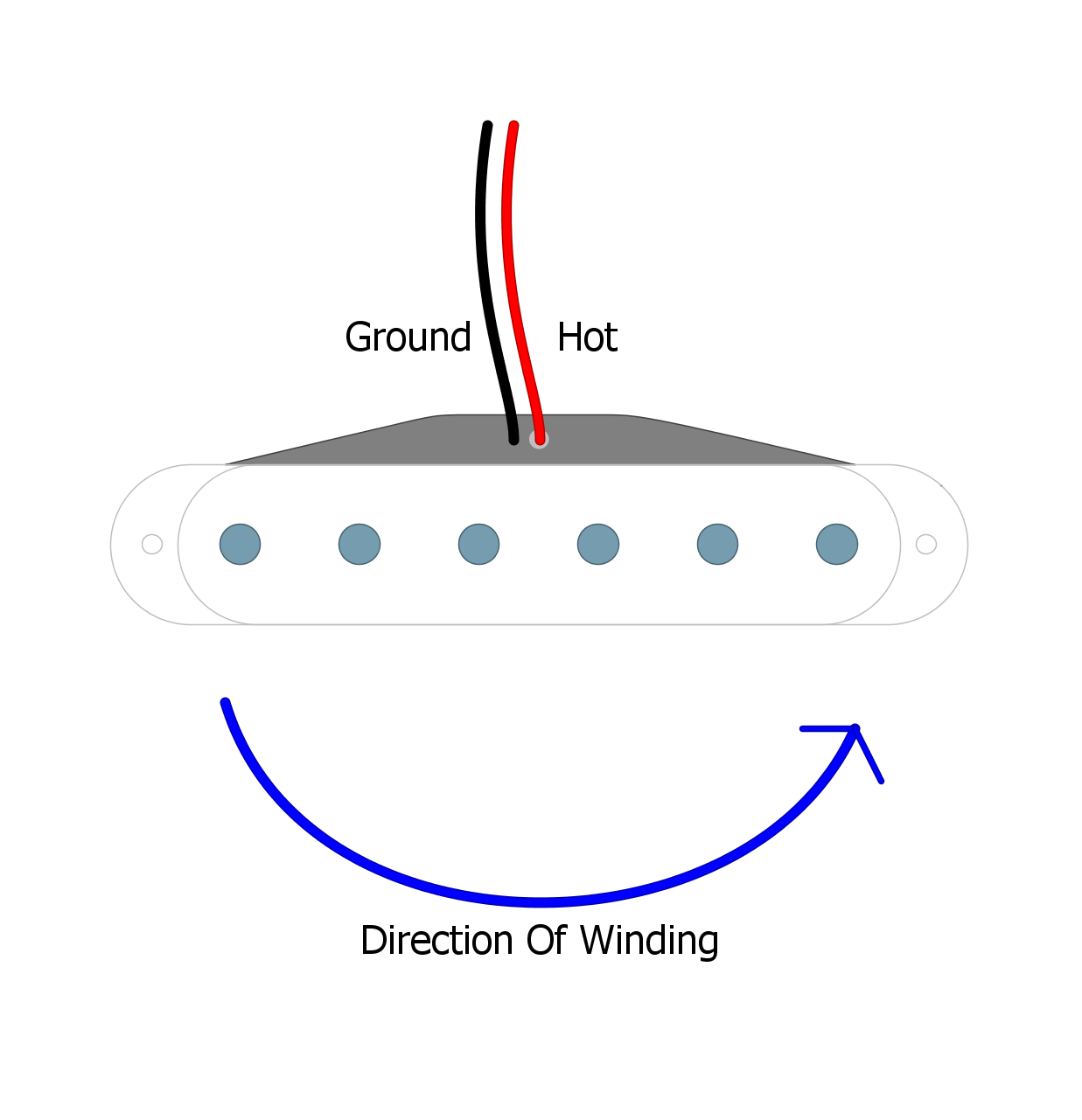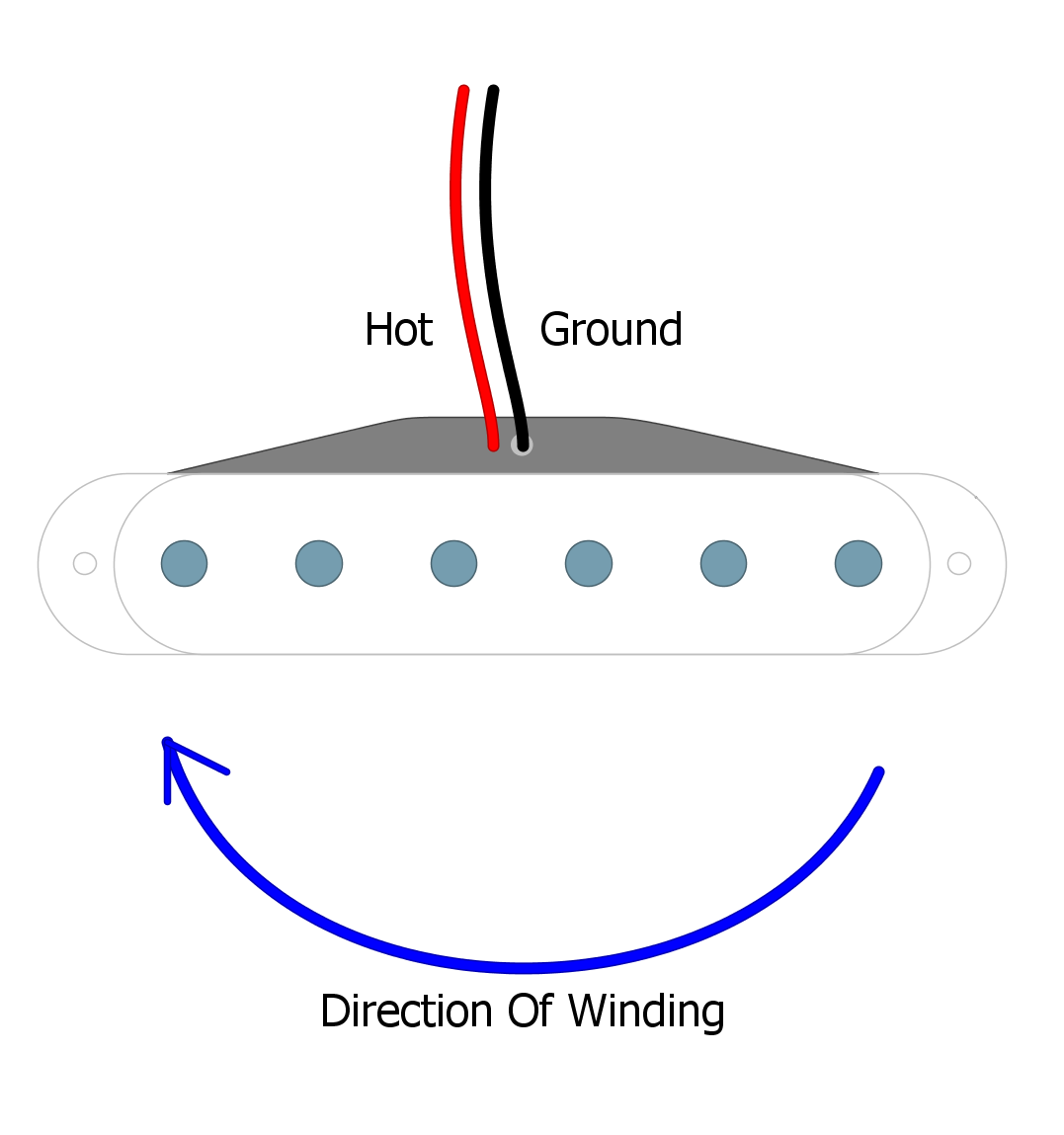
By Ed Malaker
Posted 04/19/2019
Frequently Asked Question: Why Are My Lindy Fralin Pickups Out of Phase?
Is your newly installed Lindy Fralin pickup phase giving you problems? One of the most common problems a guitarist faces when purchasing new pickups is getting the phase right. Fortunately, there aren’t a lot of other things that can go wrong, so chances are pretty good that if you just installed a new pickup and you’re having trouble with it, you’re in the right place.
What is Phase?
When two single-coil pickups complement each other electrically and magnetically, they’re considered “in phase.” Phase relates to humbucking pickups as much as single-coil pickups, but humbuckers can always be re-wired to fix the phase issue. Single-coil pickups, on the other hand, can be purchased permanently out of phase.
If you have two pickups that are in phase, you will notice it when both pickups are active. The two and four positions on a five-way switch is a widespread example of having more than one pickup active at the same time. A humbucker also has more than one pickup active at the same time, because it has two coils in its design.
If the two pickups are in phase, the sound will be full, and the two coils working together will take on humbucking capabilities. Humbucking means that there will be a noticeable drop in the 60-cycle hum, which is much more common in single-coils.
If it’s out of phase, the pickups can sound hollow and thin, very similar to a phaser pedal that’s stuck in one spot and not sweeping through time. The hum can also remain and might even double in volume. Pickups that are out of phase will exhibit one or both of these symptoms any time both pups are selected.
Two things determine the phase of a pickup: the magnetic field and the winding direction of the coil. Both need to be correct to get the best performance from your pups.
The Magnetic Field
The magnet is responsible for the polarity of your guitar pickup; it will either be North Up or South Up. You can test the polarity by holding an ordinary compass up to the coil. If North on the compass is facing away from the pickup, we say that it has a “North Up” polarity. If South on the compass is facing away from the pickup, we say that it has a “South Up” polarity.
In your guitar, the polarity of your pickups needs to alternate. So, if the pickup in the bridge position has a North Up polarity, the pickup in the middle position will need to have a South Up polarity. If the pickup in the middle position has a North Up polarity, both the Bridge and Neck pickups will need to have a South Up polarity.
Unfortunately, there is no standard regarding polarity, and it is way too easy to purchase a pickup with the wrong polarity. Make sure that you manually check the polarity is of the pickup you’re replacing before you buy it.
The Coil Winding Direction
The second thing that will determine your pickup’s phase is the direction of the coil winding. Manufacturers wind pickups in either a clockwise or a counterclockwise (often called reverse wound) direction, and just like with magnetic fields, the windings must alternate in your pups.
For example, if your middle pickup uses a clockwise winding, the Neck and Bridge pickups must use a counterclockwise wound pickup coil. (Fig 1, Fig 2)
Fig 1
Fig 2
Checking the direction of the coil winding is a little more difficult than the polarity because the pickup needs to be disconnected from the guitar to test it. You will use a Multimeter (also called a Voltmeter) (Fig 3). Set it to a low DC voltage range, or you can also use the Ohms setting.
Fig 3
Test: Step One
Connect the Black lead to the Ground of the single-coil pickup and the Red lead to the Hot. If you are not sure which one is which, connect one pickup wire to each lead of the Multimeter.
If you are using a four-wire humbucker pickup, you will first need to get the two wires for each coil by setting your Multimeter to 20k Ohms and testing any two wires until you get a reading. Once you do, those two wires are one coil, and the other two wires are the other coil.
Test: Step Two
Lightly tap anything steel on the magnetic posts in the pickup while watching the meter. If you get a positive reading, it is a Standard Wound Pickup; if the value is negative, it is Reverse Wound.
Write down your results so that you can correctly re-attach the pickup (pickups) to your guitar.
Once you’ve tested all of the pickups in your guitar, you will understand what type of pickup you need to have in each position.
If you’re making a purchase, most manufacturers have this information listed in the specs for easy viewing, and you can often get any pickup in any configuration. Make sure you get the right one.
If you’re reading this because you are having a problem with new Lindy Fralin pickups in the second and fourth switch positions, try using these steps:
Problem 1: You’re Getting Hum
Excessive hum is most likely due to a new pickup being installed reverse wound when it should be regular wound — or other way around.
Get rid of the hum easily by merely reversing the wires on your new pickup.
Problem 2: Your Tone Gets Quiet and Hollow-Sounding
A thin, hollow sound in the second and fourth switch positions usually means that a magnet is facing North Up when it should be facing South Up, and it is causing part of your tone to get canceled out when both pickups are in use.
To fix this issue, you need to flip the magnet so that it is facing the correct way, which is not always possible and could damage the pickup. Many pickups use Alnico magnetic posts, and these cannot be flipped. Also, many manufacturers use glue on their bar magnets, or they are buried deep in the casing, and these cannot be flipped either. In this case, you will need to buy a new pickup.
Humbucker pickups do not have this problem because they are built and sold as a matched set, but because guitarists want more wiring possibilities (like the option to split the humbucker into a single-coil) manufacturers sell their pickups with the four-wire design. Four wires allow a guitarist to wire each coil independently, but it also introduces the possibility of wiring it with the wound, reverse wound, problem.



